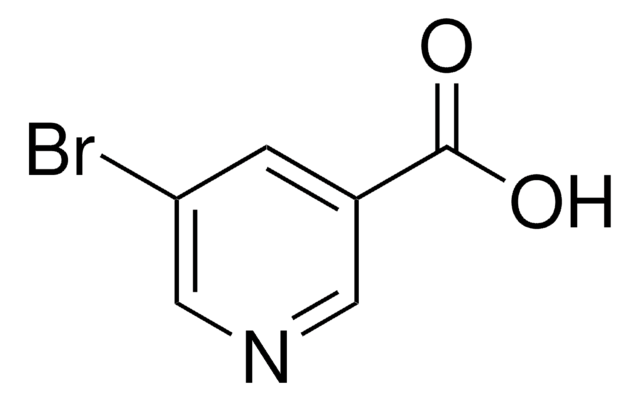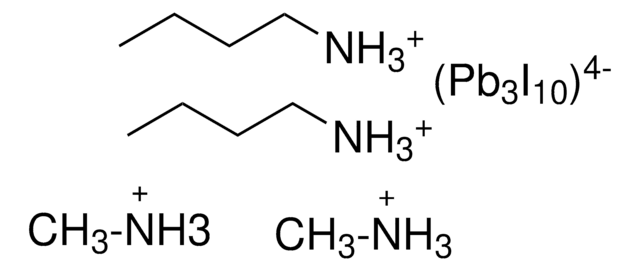805254
FK 102 Co(III) PF6 salt
Sinónimos:
Greatcell Solar®, tris(2-(1H-pyrazol-1-yl)pyridine)cobalt(III) tri[hexafluorophosphate]
About This Item
Productos recomendados
description
Carbon: 28.5%-30.1%
Nitrogen: 12.5% - 13.2%
Quality Level
assay
>98%
form
powder
SMILES string
N1(C2=NC=CC=C2)N=CC=C1.C3(N4C=CC=N4)=CC=CC=N3.C5(N6C=CC=N6)=CC=CC=N5.C
General description
Application
FK102 cobalt complexes offer guaranteed performance, high reproducibility, consistent results and are of highest purity. In comparison to triiodide-based redox electrolytes, cobalt complexes in general increase photovoltages and particularly at lower light levels (e.g. for indoor applications), significantly increase device power output.
Recommended use:
In liquid-based electrolytes: typically 0.15-0.2 M of Co(II) and ca. 0.05 M Co(II)
In solid-state photovoltaic cells: up to 10 weight % added to the hole transport material system.
Legal Information
signalword
Warning
hcodes
Hazard Classifications
Eye Irrit. 2 - Skin Irrit. 2 - Skin Sens. 1 - STOT SE 3
target_organs
Respiratory system
Storage Class
11 - Combustible Solids
wgk_germany
WGK 3
flash_point_f
Not applicable
flash_point_c
Not applicable
Certificados de análisis (COA)
Busque Certificados de análisis (COA) introduciendo el número de lote del producto. Los números de lote se encuentran en la etiqueta del producto después de las palabras «Lot» o «Batch»
¿Ya tiene este producto?
Encuentre la documentación para los productos que ha comprado recientemente en la Biblioteca de documentos.
Artículos
Next generation solar cells have the potential to achieve conversion efficiencies beyond the Shockley-Queisser (S-Q) limit while also significantly lowering production costs.
Dr. Perini and Professor Correa-Baena discuss the latest research and effort to obtain higher performance and stability of perovskite materials.
For several decades, the need for an environmentally sustainable and commercially viable source of energy has driven extensive research aimed at achieving high efficiency power generation systems that can be manufactured at low cost.
Nuestro equipo de científicos tiene experiencia en todas las áreas de investigación: Ciencias de la vida, Ciencia de los materiales, Síntesis química, Cromatografía, Analítica y muchas otras.
Póngase en contacto con el Servicio técnico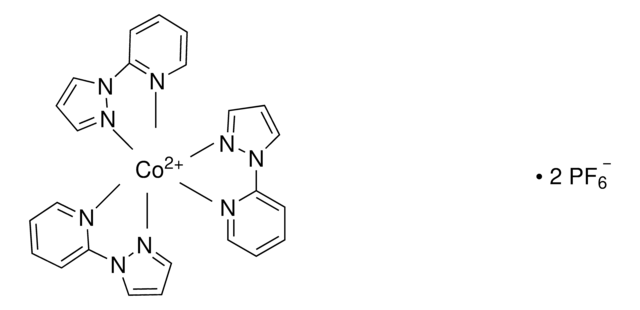
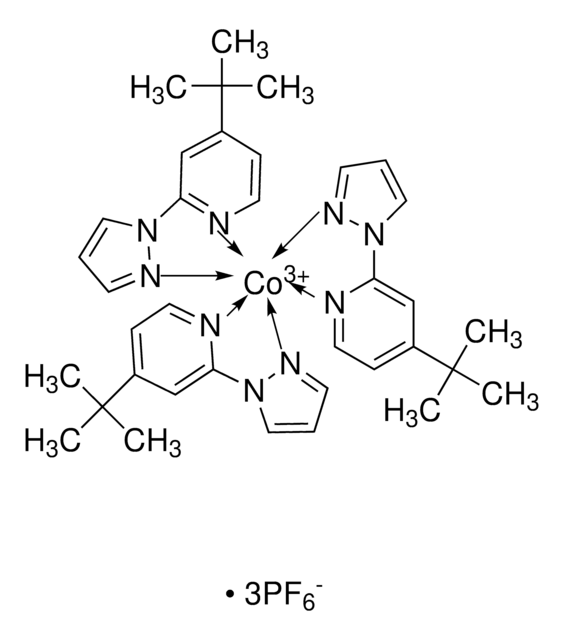
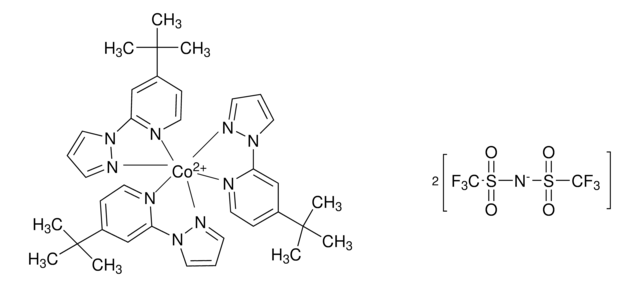
![[(TEEDA)Ni(o-tolyl)Cl] ≥95%](/deepweb/assets/sigmaaldrich/product/structures/156/227/a6ce708d-c671-4ca6-98ba-ef780504ca58/640/a6ce708d-c671-4ca6-98ba-ef780504ca58.png)



![[Pd(terpy)(MeCN)][BF4]2 ≥95%](/deepweb/assets/sigmaaldrich/product/structures/221/681/ebdc06b7-3b8d-48d4-8aae-08a856260f39/640/ebdc06b7-3b8d-48d4-8aae-08a856260f39.png)
